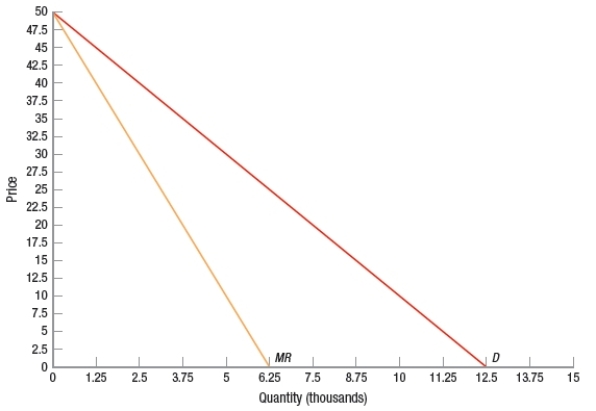Multiple Choice
(Figure: Multiple-Price Monopolist) The monopolist in the graph has market power; she can separate the market into different consumer groups based on their elasticities of demand, and she can prevent arbitrage. The monopolist has a marginal cost of $10. If she plans to charge $40 for the first 2,500 units; $30 for the next 2,500 units; $20 for the next 2,500 units; and $10 for the final 2,500 units, this is an example of _____ price discrimination, and the producer surplus for the monopolist would be _____.
A) third-degree; $400,000
B) second-degree; $200,000
C) third-degree; $200,000
D) second-degree; $150,000
Correct Answer:

Verified
Correct Answer:
Verified
Q104: Coupons in the Sunday newspaper circular segment
Q105: These are all policies directed at dealing
Q106: Rent-seeking behavior occurs in order to try
Q107: (Table) The table shows sales from
Q108: Papabear Corporation is a single seller of
Q110: A price-discriminating monopolist provides higher social welfare
Q111: With perfect price discrimination<br>A) producer surplus is
Q112: All of these conditions are required for
Q113: In both monopolies and perfectly competitive markets,
Q114: Which of these tactics is LEAST common